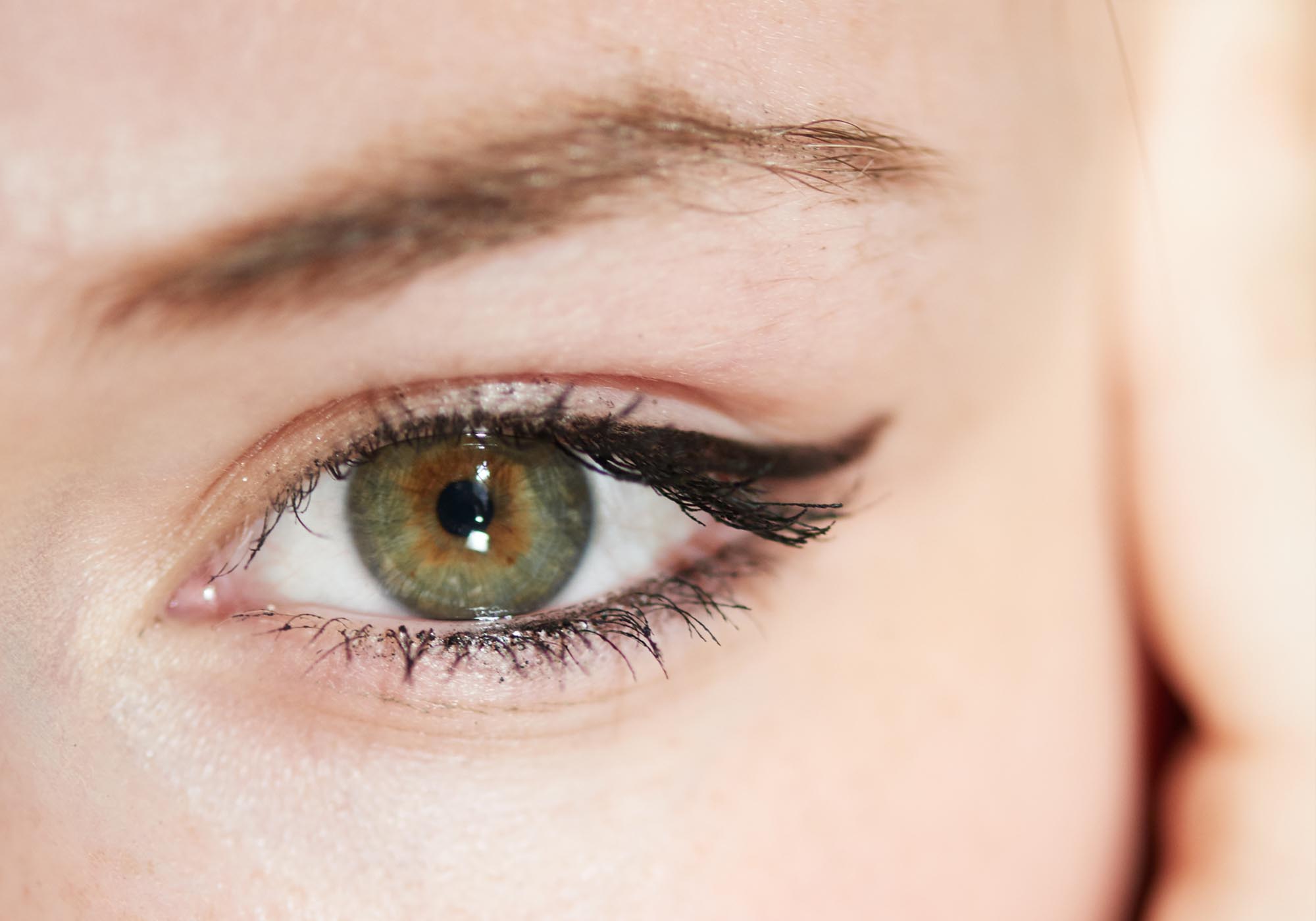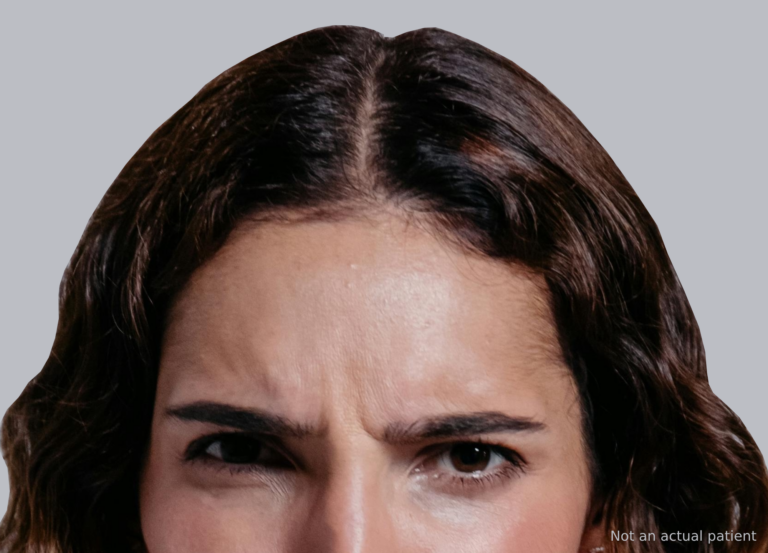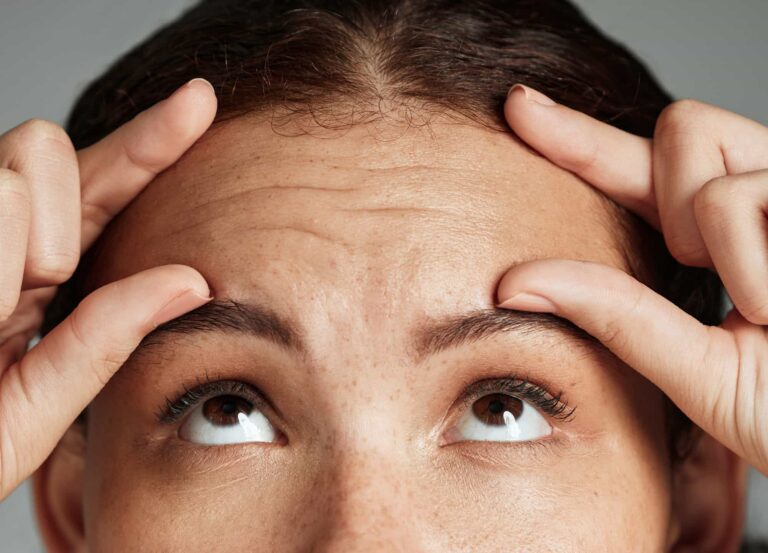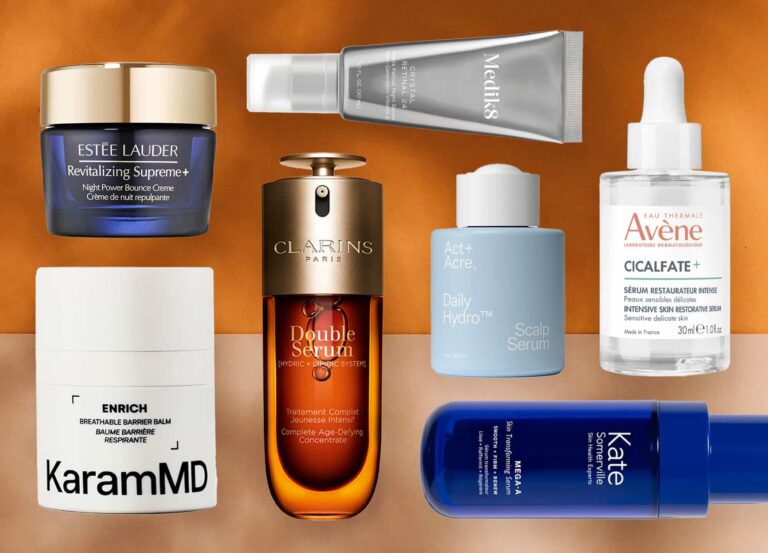Under-eye filler has earned a curious reputation for being both a top shot in injectors’ offices and, we’re told, the most problematic of procedures. In recent months, several practitioners have taken to social media, cautioning against using certain fillers in the delicate tear trough area and highlighting how smart placement, technique, and patient selection can help stave off complications, both in the short-term and down the line. (Tear trough filler, we should note, is an off-label treatment, as no injectable gel is currently approved for the area.)
“The under-eye region is complex and one of the more difficult places to treat on the face, for finessed results,” says Dr. Amelia K. Hausauer, a board-certified dermatologist in Campbell, California. Various factors contribute to the trickiness of the tear troughs, including the quality and substantiveness of the tissues under the eyes. Not only is the skin the thinnest on the body, but fat is also in short supply here; taken together, these make the area highly unforgiving. “There’s less tissue to cover the filler, so bumps, swelling, and a blue discoloration from gel placed too high in the skin, termed the Tyndall effect, are more common,” Dr. Hausauer explains. Moreover, whatever fat does exist in the region tends to droop and bulge, forming bags, which are challenging to camouflage with filler, especially if your skin lacks snap.
Sitting just beneath the skin of the lower eyelids is a lymphatic system, charged with clearing fluids and promoting immune function. If clogged and incapacited by poorly placed filler, pockets of puffiness can form, waxing and waning over time (at least until the filler is dissolved). Hyaluronic acid (HA) gels also attract and hold water, some more efficiently than others, and can be slow to break down in the tear trough region, so if an inappropriate product is used, the under-eyes can look bloated and boggy for years after injection.
Given the intricate anatomy of the tear troughs and potential for trouble, “only 30% of patients who come in requesting under-eye filler end up having that treatment, due to candidacy,” notes Dr. Flora Levin, a board-certified oculoplastic surgeon in Westport, Connecticut. She also dissolves a lot of tear trough filler that should never have been injected in the first place.
As injectors grow increasingly wise to which dark circles truly qualify for filler, some are offering blood-derived platelet-rich plasma (PRP) injections as an alternative for select patients. While the evidence supporting PRP’s efficacy under the eyes, specifically, is somewhat limited, the growth-factor-rich product has been shown to stimulate collagen production for thicker, smoother skin—making it a promising remedy for tired under-eyes.
Ahead, experts explain who can actually benefit from tear trough filler; when PRP may be a better option; and which under-eye issues demand a different treatment altogether.
Who is—and isn’t—a candidate for tear-trough filler?
“Patients with hollowness, excellent skin tone, and minimal to no under-eye bags are the best candidates,” Dr. Levin tells us. For those whose dark circles are a direct result of volume loss—meaning there’s an actual depression where the lower lid meets the cheek—a small amount of HA gel can be injected deep, under the skin and muscle, she says, to level the topography of the area and obviate shadows in the most seamless way possible. “Injectors must have a very good understanding of anatomy, to reach the appropriate level of injection known to avoid complications,” adds Dr. Hausauer.
Dr. Shereene Idriss, a board-certified New York City dermatologist, finds that under-eye issues often develop due to volume loss that’s occurring more laterally on the face—typically, in the temples and/or cheeks, which sink and flatten with age. So it’s critical for injectors to think globally before acting locally—“to take a 360 approach and look at the face as a whole when addressing the under-eyes,” she adds, rather than inflating the tear trough alone. Dr. Hausauer agrees that addressing the cheek and under-eye area together “gives the most harmonized result, with less risk of overfilling the tear trough and other unwanted side effects,” she says.
As we’ve learned, the majority of folks are ill-suited for tear-trough filler, despite the treatment’s seeming ubiquity. If you’re normally prone to fluid retention under the eyes—related to chronic allergies or sluggish lymphatics—you may want to avoid filler, since it “can exacerbate already present swelling, due to its hydrophilic [or water-grabbing] properties,” says Dr. Levin. Lax skin, which doesn’t hold filler well, is another disqualifying factor. Doctors also think twice before placing filler around under-eye bags (protruding fat pads), as the gel can easily make them look worse. “If the [fat] herniation above the cheekbone exceeds the degree of hollowness, the patient is a better surgical candidate,” according to Dr. Levin. (A lower blepharoplasty can remove or reposition excess under-eye fat, to eliminate bags while tightening sagging skin.) In the right patient, however, strategically placed filler “can help soften the distinction between a herniated fat pad and the cheek,” says Dr. Idriss, by diminishing its prominence and helping it blend in better. Our doctors agree that only minor bags can be obscured with filler and that nailing this technique, for a truly natural look, takes next-level skill and aesthetic judgement.
The pros and cons of PRP for dark circles
First things first: “PRP is a blood product collected with an FDA-cleared device,” explains Dr. Hausauer. Whether it’s slathered over a freshly microneedled face or injected into the skin or scalp, these are considered off-label PRP applications. PRP in the under-eye area “shows much promise for safety and efficacy in small studies but still needs large-scale clinical trials, to be better understood,” she stresses.
Since PRP lacks the viscosity of a gel filler, “it’s not as good at restoring volume as filler is—but it has the potential to target different concerns,” Dr. Hausauer adds. The studies that do exist exploring PRP for the under-eyes have found that it can help improve hyperpigmentation and significantly boost skin firmness and elasticity, making it a win for the diaphanous area.
“PRP can work wonders on dark circles and crepey skin on the under-eye—when it works,” says Dr. Idriss, emphasizing that only about 30% of patients see success with this treatment. (She recommends getting three rounds, spaced about a month apart, and then pausing, to see how your body reacts.) “I always let patients know that PRP is not a miracle cure but that it’s worth a shot, especially for candidates who don’t do well with filler,” Dr. Idriss says. Doctors will often combine PRP with other procedures, like lasers, radiofrequency, and microneedling, in order to enhance collagen growth and to “better address the complexity of the under-eye area,” Dr. Hausauer says. She’ll occasionally layer PRP injections over deeply placed filler, for a thorough refresh of the under-eye area.
There are, of course, physicians who are less enthused about PRP’s eye-enhancing potential. “I find it frustrating because the results are not consistent,” says Dr. Nazanin Saedi, a board-certified dermatologist in Philadelphia. She bemoans the lack of data behind the treatment and reminds us that PRP’s precise mechanism of action is not known. “I don’t do much of it because I cannot guarantee consistent, reproducible results,” says Dr. Saedi, who reserves it mainly for patients seeking a “natural” alternative to fillers.
On the upside, since PRP is more liquid than gel and not as thick as filler, it’s far less likely to leave bumps and contour irregularities or to clog an artery, causing a vascular occlusion. Both filler and PRP injections can result in temporary swelling and bruising under the eyes (though our physicians find that, in the case of filler, using cannulas instead of needles can help reduce black-and-blues). Dr. Levin points out that results from PRP take weeks and multiple treatments, whereas filler, when done right, gives an instant payoff.
As with every cosmetic treatment, expectation management is key. “Because this is a new field, with many questions still unanswered, I’m very up-front with patients about not only the promise of PRP—I have seen it improve thin, pigmented skin—but also the limitations and need for more investigation,” summarizes Dr. Hausauer.
When injectables alone aren’t enough
From crepiness to laxity, darkness to puffiness—it’s almost inconceivable for such a small stretch of skin to bear so many crosses. But it is a common scenario—and typically, myriad woes contribute to a tired appearance. Which is why, “for many people, rejuvenation of the eye area involves multiple types of treatments, to get the best outcome,” says Dr. Hausauer.
Discoloration alone can stem from several sources—excess melanin, blood vessels shining through translucent skin, shadows cast by hollows and bags—all of which can present simultaneously. In such cases, the hollowing may respond to filler, says Dr. Saedi, but the vessels will demand careful vascular laser work—trust only a laser specialist to zap veins around the eyes—and stubborn pigment may require a series of picosecond laser treatments.
Compounding darkness, there may be other anatomic elements in play. “Some patients have a roll of muscle under the eye that is mistaken for a tear trough—a thickening of the circular muscle that goes around the full eye—which can be effectively targeted with off-label neuromodulators, such a Botox, Xeomin, Dysport, or Jeuveau,” Dr. Hausauer tells us. “I also see patients with crepey or wrinkled skin [who] are more appropriately treated with lasers or other modalities that build collagen and tighten the area—something filler will not do as a stand-alone treatment.”
So while filler is a mainstay for under-eye circles and PRP has its place, neither is a panacea. When aiming to reinvigorate the eyes, your best bet is to meet with a board-certified dermatologist or plastic surgeon, who can tailor treatments to your particular concerns.











